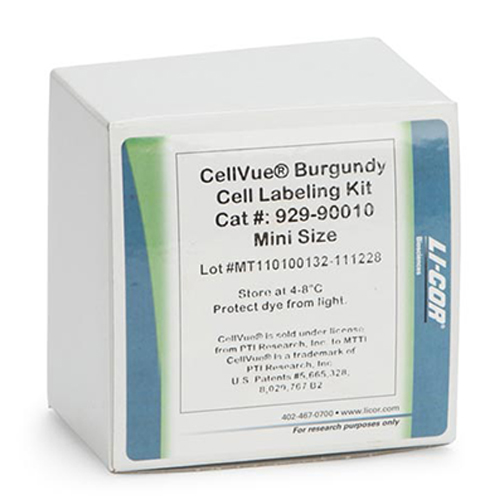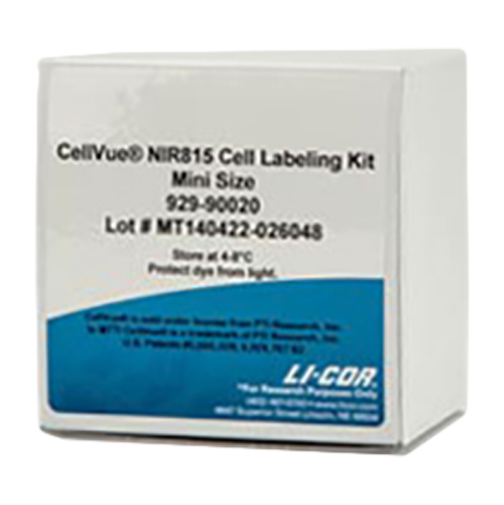CellVue® Fluorescent Cell Labeling Kits
Products

CellVue® Burgundy Fluorescent Cell Labeling Kit

CellVue® NIR815 Fluorescent Cell Labeling Kit

Diluent C for Use with CellVue® Fluorescent Cell Labeling Kits
Fluorescently Label Cells or Tissues for in vivo or in vitro Studies
CellVue fluorescent imaging kits use proprietary labeling technology to stably incorporate fluorescent dyes containing long aliphatic hydrocarbon tails into lipid membranes1. They are useful for researchers working in all aspects of science and technology where fluorescently-labeled cells and/or tissues are required. CellVue dyes also provide researchers with valuable tools for many in vivo and in vitro cell studies using fluorescent membrane labels.
The CellVue dyes are provided in an easy-to-use kit format containing a solution of the dye in ethanol and a cell labeling diluent. The labeling diluent, Diluent C, provided with the kit is an iso-osmotic aqueous solution that contains no physiologic salts or buffers, detergents, or organic solvents, and is designed to maintain cell viability while maximizing dye solubility and staining efficiency2, 3. The simple membrane labeling protocol provided with the kit is applicable to almost any type of cell or organism.
Molecular Structure of CellVue Dyes
CellVue dyes consist of long aliphatic hydrocarbon tails linked to a polar fluorescent chromophore.
- These extremely lipophilic fluorescent dyes rapidly and stably integrate into the phospholipid membrane of cells or other membrane-containing bioparticles by non-covalent interactions.
- The dyes are stably maintained within the lipid bilayer through strong hydrophobic interactions and do not transfer into the unstained membranes of adjacent cells, which permits a labeled cell to be tracked for extended periods of time.
- The rapid incorporation of the dye allows for immediate analysis of cell functions without a waiting period.
References
- Horan, P. K., and Slezak, S. E., Nature, 340, 167-168 (1989).
- Horan, P. K., et al., Methods Cell Biol., 33, 469-490 (1990).
- Poon, R.Y., et al. In Living Color: Flow Cytometry and Cell Sorting Protocols, Diamond, R. A., and DeMaggio, S. (Eds.). p. 302-352 (Springer-Verlag, New York, 2000).